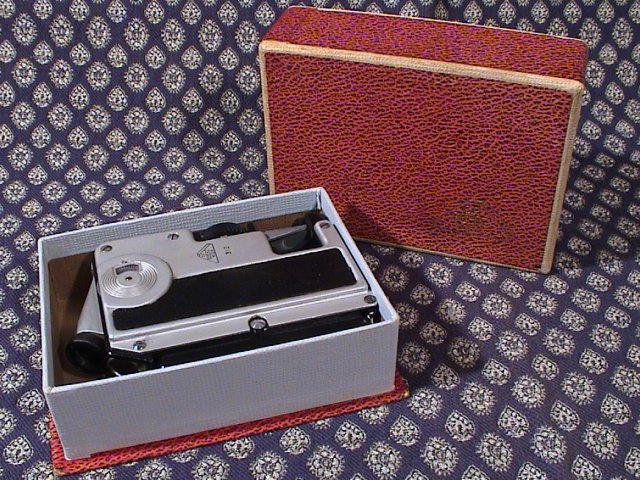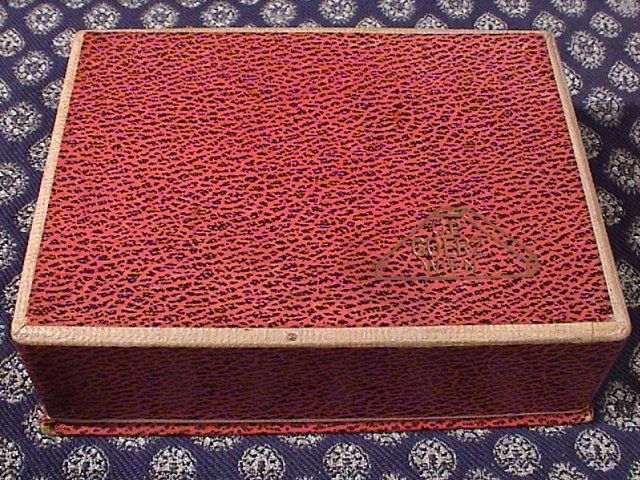C.P. Goerz GmbH of Vienna introduced the original Minicord in 1951. It is one of the highest quality subminiatures ever built. The nature of subminiature cameras requires extensive enlargement to create decent size prints for viewing. Because enlarging magnifies the flaws in a photograph, it is more important on a smaller camera to maintain absolute sharpness of image, flatness of film and accuracy in focus. Goerz opted to build their camera a little larger than most of the competition. It is about the size of a pack of cigarettes, and is a twin lens reflex; employing a roof prism instead of the usual mirror. This made the camera easier to handle, and the focusing is very exact.

The designers felt that because the camera was so small, it could be put into a vertical design and that the vertical design was more desirable for the average photographer.
The lens is a Goerz Helgor f2/25mm, is particularly suited for indoor photography with existing light with finer grain films as well as general photography. Close focusing to 0.3m (12 inches). The shutter is a metal plane, with speeds 1/10-1/400 s.

The viewing screen is a bit larger than the 10x10mm image size and offers one of the largest view of any subminiature camera. The viewing lens is angled at 45° towards the rear of the camera and the ocular can be adjusted ±4 dioptres. Although the viewing system does not correct for parallax reference marks are visible in the viewfinder frame. As in pentaprism-equipped single lens reflexes the ground glass image is not only right-side-up but also unreserved; in all conventional twin-lens reflex cameras the image is reserved laterally - a distinct disadvantage. The view finder's focusing is coupled to that of the lens. Focusing range and depth of field scales are provided on the left side of the camera body.
Double perforated 16mm movie film in special cassettes was used to make 40 exposures, each 10mm square; So the results are the same regardless of how the camera is held.
A small handle folds down from the underside of the camera to provide additional stability, There is a standard tripod socket in the base and rings are provided for attaching a carrying cord. The film is advanced by squeezing a trigger, a smooth operation that can be performed whilst framing the next photograph. This cocks the shutter automatically. The shutter release is soft and has a gentle whisper click. Rapid sequence pictures are very easily made; at about one frame per second.
It accepts regular 16mm film loaded into special cassettes.
This camera is commonly rated as one of the top three subminiature cameras of this period; along with the Minox and Gami.
Various filters were available. The company also made an enlarger that used the camera body and lens for enlarging.
Various colours and coverings were available (black leather, brown enamel and satin metal), and a gold-plated version with red or green leather.
The price in 1957 was $139.50, the same as the Minox AIIIs.
Specification
| Years of production | 1953-1960 (?) |
| Lens | Goerz Helgor f/2 25mm, fully corrected, six elements, coated, iris diaphragm stops down to f/11; deeply recessed lens created natural lens shade |
| Aperture | f/2 - f/11 |
| Shutter Speeds | All metal, continuous settings, with markings of B. 1/10, 1/25, 1/50, 1/100, 1/200 and 1/400 |
| Flash sync. | X-synchronization, standard PC plug; flash bracket with accessory clip attaches to tripod socket |
| Film | Individual or twin cassettes, using 16mm double perforated film only. Black and white 25 exposure individual cassettes, 2 roll pack, Eastman Tri-X (ASA 200), Adox KB-14 (ASA 16), Eastman Pan-Negative (ASA 40). Black and white loaded double cassettes, 40 exposures, Gevaert Panchromosa (ASA 32). Colour Anscochrome (EI 32), individual cassettes 25 exposures, 2 roll pack. Empty cassettes, 25 exposures, double cassettes 40 exposures. |
| Viewfinder | Eye-level viewfinder adjustable for individual vision. Brilliant ground glass focusing, upright unreversed image. Parallax correction marks for close distance. |
| Film Advance | Camera is held in pistol grip for film advance and exposure release; single pull on trigger advances film and cocks the shutter, permitting rapid sequence picture taking; exposure counter advances automatically after first setting; exceptional smooth shutter release button. |
| Film Counter | |
| Finishes | black, blue, chrome, green, gold, red |
| Supplied | |
| Manuals | |
| Dimensions | 2 3/4" x 3 7/8" x 1 1/8" |
| Weight | 12 oz. |
| Other features | Tripod socket, retractable finger support for added hold control. Pouch case included in the price of the camera, with neck chord. |
Cameras
Goerz Minicord
The original model sold in 1953.
Goerz Minicord III
Around 1958 the Minicord was replaced by the Minicord III. Functionally, the only difference is that the Minicord III has flash synch, while at least some of the original models do not. The original models with flash synch may have been a late factory upgrade (an unmarked Model II perhaps). The Minicord III differs from the original model cosmetically by using brown leather to replace the black from the original model. Also, part of the central body casting was in black bakelite on the original is now brown. the lens and depth of field plate are silver, not black. A special cold shoe bracket was made that allows a flash or clip on meter to be placed above the view finder.
In addition to the normal finish, a few Minicords were gold plated with red or green leather. These are very uncommon.
Goerz Minicord 3
Labelled "3", perhaps for different markets and now uncommon.
Goerz Minicord IV
Only prototypes have been reported, this improved model has a match-needle, selenium meter.
Accessories
| Filters | 23mm diameter, light yellow, medium yellow, green, orange Filter 2003/07/16 24.50USD |
| Sun shade | |
| wrist chain | |
| flash adapter bracket | |
| Shoulder Case | Leather ever-ready case with shoulder strap. |
| Projector | Minigrand 100 slide projector for 25x25mm mounts, with 35mm f/2.5 lens, slide and strip view, 8x magnification, slide mask of metal, plastic and glass, 25x25mm box of 20. 2x2" cardboard mounts, box of 100. |
| Enlarger | Minilux enlarger uses camera, making pictures up to 3 1/8" x 3 1/8", stores away in a wooden box, complete with metal easels, f4.5 for enlarger, with film carrier. It actually attaches to the back of the camera in place of the regular film back, and uses the cameras fine lens and shutter for making enlargements. |
| Developing Tank | Miniplex developing tank |
Links
Rick Oleson has written a technical note on the camera at http://rick_oleson.tripod.com/index-63.html